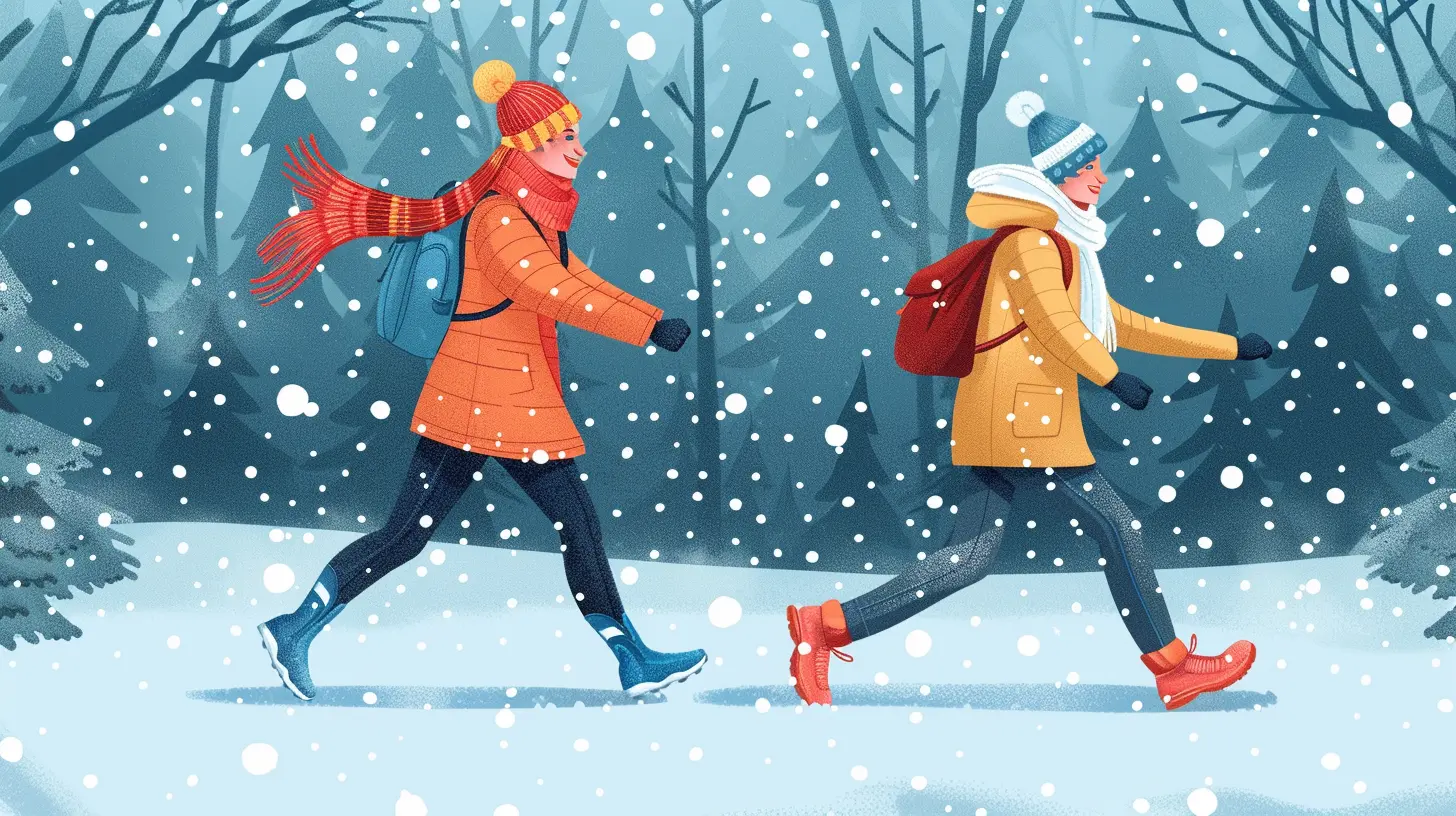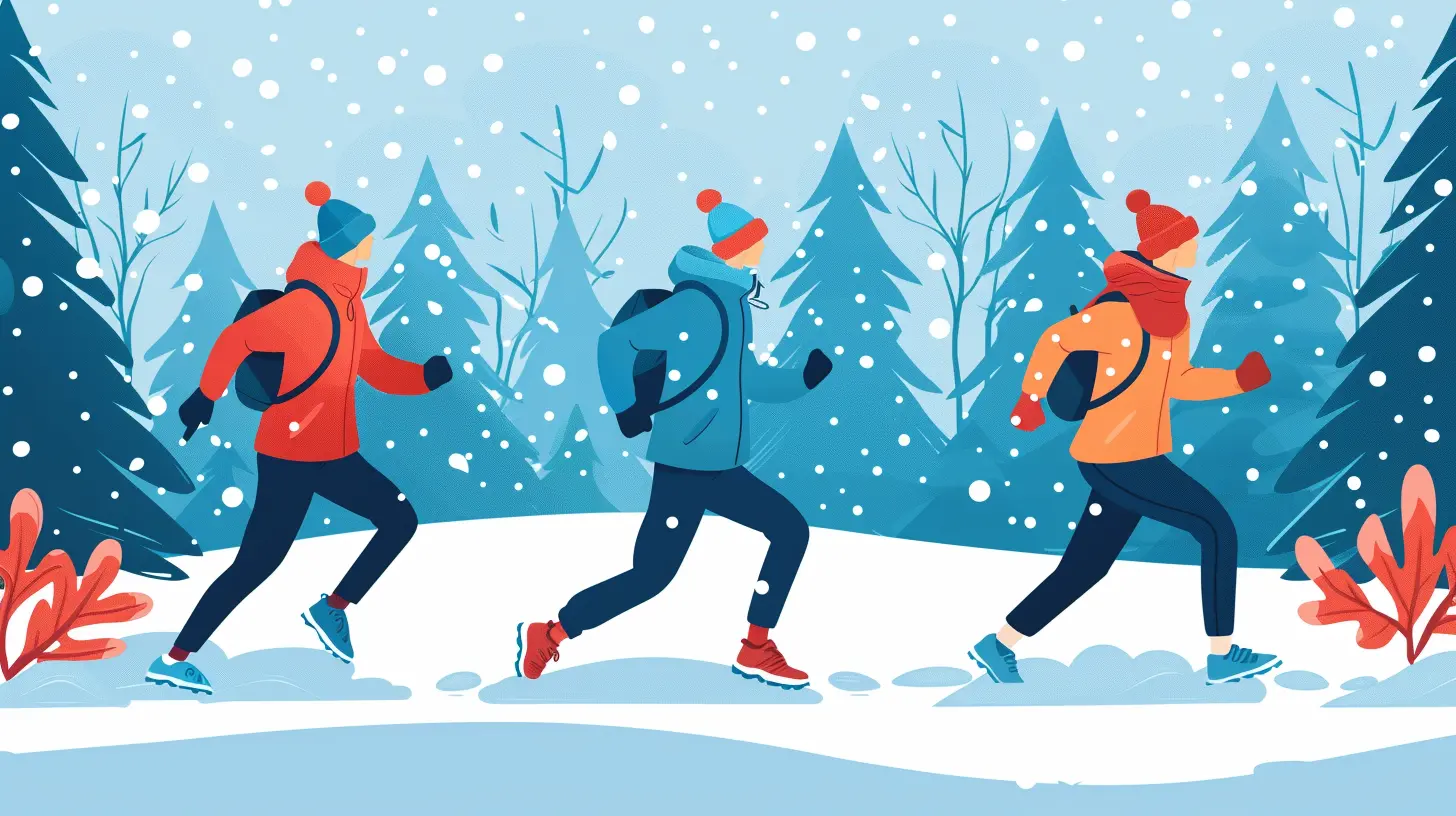Tips for Safely Exercising Outdoors in Cold Weather
11 November 2025
Let’s face it—when the temperature drops and your breath starts fogging up the air, lacing up your sneakers for an outdoor workout isn’t exactly appealing. Staying active during the colder months can feel like a mental (and physical) challenge. But here’s the thing: you don’t have to hibernate just because it's chilly outside!
In fact, outdoor winter workouts can be incredibly refreshing and invigorating. The trick is doing it safely and smartly. So, if you're someone who loves crisp morning jogs or snow-covered trail hikes, this guide is for you.
Below are practical, tested, and easy-to-follow tips for safely exercising outdoors in cold weather—because staying fit shouldn’t come with frostbite.
Why Bother Exercising in the Cold Anyway?
Before we dive deep into the how-to's, let’s talk about the “why.” You might be wondering, "Is working out in the cold even worth it?"Absolutely. Here’s why:
- Burn more calories — Your body works harder to regulate temperature.
- Boost your endurance — Colder temps can improve cardiovascular performance.
- Mood boost — Say goodbye to seasonal blues. Exercise triggers those sweet endorphins.
- Immune support — Regular movement can help keep colds and flu at bay.
So yes, it’s worth bundling up and moving your body, even when the weather is less than cozy.
1. Dress in Layers Like an Onion (A Smart One)
You’ve probably heard this before—and for good reason. The biggest mistake people make? Wearing one chunky jacket. Bad idea.Here’s the winning combo:
- Base layer: Think moisture-wicking gear (not cotton). It pulls sweat away from your skin.
- Middle layer: Insulation. A fleece or light sweater does the trick.
- Outer layer: Windproof and waterproof. Protects you from the elements.
And don’t forget: You can always peel a layer off mid-run. Better safe than sorry (or frozen)!
2. Warm Up Indoors First
Let’s be real—jumping straight into a run when your muscles are stiff as icicles? That’s a pulled hamstring waiting to happen.Get your blood flowing inside before heading out. Try:
- 5–10 minutes of jumping jacks, lunges, or high knees.
- Dynamic stretches like arm swings and leg circles.
- Marching in place with a little attitude (hey, no shame—it works!).
Starting warm helps avoid injury and makes you feel way more human once you hit that cold air.
3. Protect Your Extremities (Fingers, Toes & Nose)
Your body redistributes heat to your core in cold weather, which means your fingers, toes, and nose can suffer.Here’s your go-to gear:
- Thermal gloves with touchscreen fingertips (because we know you’re not giving up your playlist).
- Wool socks or moisture-wicking layers to keep feet dry and warm.
- Face masks or balaclavas for wind-chapped cheeks and noses.
- Headbands or beanies to keep your ears warm (and let’s be honest, bad hair days are forgiven in winter).
Remember: frostbite can sneak up fast. Don’t ignore numbness or tingling.
4. Mind Your Footing — It’s a Slippery Slope Out There
Literally. Snow and ice make for tricky terrain. That runner’s high isn’t worth a sprained ankle.So what can you do?
- Wear proper footwear with good traction or trail-running shoes.
- Add traction cleats or spikes if it’s icy. They’re like snow chains—for your feet.
- Shorten your stride to stay in control.
- Stick to cleared or plowed paths when possible. Fresh powder might look pretty, but it hides surprises.
Slow and steady keeps your tailbone intact.
5. Stay Hydrated (Yes, Even When You’re Not Sweating)
Cold air can be deceiving. You might not feel sweaty, but you’re still losing fluids.Always bring water, and don’t wait until you’re thirsty. If it's sub-freezing, stash an insulated bottle, so it doesn’t turn into a slushy halfway through your workout.
Also, consider warm herbal tea post-workout. Hydrating + comforting = win.
6. Pay Attention to Your Body Signals
Look, exercising in the cold isn’t about pushing through discomfort at all costs. Know the difference between dedication and danger.Watch out for:
- Shivering – Early sign that you’re getting too cold.
- Numbness – Especially in fingers, toes, or face.
- Dizziness or confusion – Could be early signs of hypothermia.
- Persistent cough or chest tightness – Especially if you have asthma.
Bottom line: listen to your body. If something feels off, it probably is.
7. Adjust Your Expectations
Winter workouts are not the time to chase your summer personal best times. Cold weather adds resistance. Plus, wearing layers slows you down a bit.And that’s totally okay.
Focus on consistency over intensity. Think of it like building your fitness savings account, ready for withdrawal when spring rolls around.
Don’t beat yourself up if you're not crushing your usual pace. Showing up in the cold already makes you a champ.
8. Don’t Skip the Cool Down. Seriously.
It’s tempting to bolt back indoors as soon as you're done. But cooling down is still crucial—even in chillier temps.Try a few minutes of walking, followed by gentle stretching inside where it’s warm. This:
- Helps prevent stiffness
- Aids recovery
- Reduces soreness
Think of it like a warm goodbye to your muscles. They’ll thank you tomorrow.
9. Time It Right — Daylight is Your Friend
Winter days are short, and outdoor visibility drops fast in the late afternoon. If you can, schedule your workout during daylight hours—preferably late morning when it’s a bit warmer.If you’re out before sunrise or after sunset, wear reflective gear and headlamps. Safety first. You want cars and cyclists to see you coming.
Bonus: sun exposure helps with Vitamin D levels and boosts your mood.
10. Watch the Wind Chill Factor
The actual temperature is one thing. The wind chill? That’s a whole different beast. It can make 30°F feel more like 10°F—and that can change how long or whether you should be outside.Always check the wind chill index before heading out. And if it's dangerously low (we’re talking single digits or negative temps), you’re better off staying indoors or doing a shorter workout.
Sometimes the smart move is calling an audible—and that’s okay.
11. Fuel Up Beforehand
Working out in the cold burns more energy. Your body’s doing everything it can to keep you warm and moving.Make sure you eat a solid snack 30–60 minutes before your outdoor session. Think:
- A banana with nut butter
- Oatmeal and berries
- A protein shake with a little fat
Post-workout? Refuel within an hour. Your muscles are waiting, and repairing them with the right nutrients speeds up recovery.
12. Know When to Stay Indoors
This might sound counterintuitive in an article about outdoor workouts, but sometimes the safest option is to press pause. Here’s when to skip the snowy sweat session:- During blizzards or freezing rain
- If temperatures fall below 0°F (-18°C)
- When there’s ice accumulation on roads and trails
There’s no shame in swapping road runs for the treadmill or doing a bodyweight circuit in your living room. Flexibility is part of fitness, too.
Final Thoughts: Cold Isn’t a Stop Sign
Winter doesn’t have to derail your fitness goals. With a few smart tweaks, you can keep crushing your workouts AND stay safe while you're at it.Just respect the weather, listen to your body, and dress the part. Before you know it, you'll be one of those people who looks forward to winter runs—and maybe even prefers them.
So grab those gloves, zip up your jacket, and get out there. You’ve got this.
all images in this post were generated using AI tools
Category:
Outdoor WorkoutsAuthor:

Laura Hudson
Discussion
rate this article
1 comments
Maisie McManus
Great article! Staying active in cold weather can be challenging, but your tips provide valuable insights. It's important to listen to our bodies and prioritize safety while enjoying the outdoors. Thank you for sharing these helpful reminders!
November 24, 2025 at 4:45 AM

Laura Hudson
Thank you for your kind words! I'm glad you found the tips helpful. Stay safe and enjoy your outdoor workouts!


